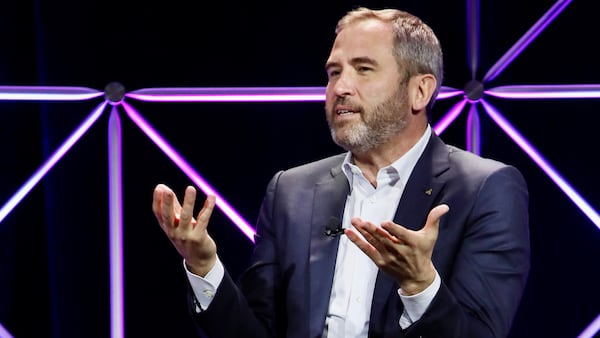- Officials from the European Securities and Markets Authority tell DL News they are labouring to ensure landmark crypto law is applied uniformly across the 27-nation bloc.
- Binance’s loose corporate structure poses challenge to traditional regulatory process in Europe.
- ESMA is focusing on making sure conflicts of interest highlighted in FTX case won’t happen after MiCA goes live in 2024.
Now that European Union regulators are writing rules for its landmark crypto law, they are facing their next major task — making sure giants like Binance don’t game the system.
In an interview with DL News, officials in the European Securities and Markets Authority (ESMA) said it will be crucial for each of the bloc’s 27 member states to apply the law in the same way.
Otherwise, crypto firms with unorthodox business models might find cracks within the Markets in Crypto-Assets regime they could exploit to sidestep compliance.
“When it comes to big players like Binance, one area of attention for us is to make sure that the MiCA rules are implemented in a consistent way across member states,” Benjamin Burlat, senior policy officer on the digital finance and innovation team at ESMA, told DL News on a video call.
Inconsistencies
Exploiting inconsistencies in financial regulations is not particular to crypto. TradFi firms have long practised what’s known as ‘regulatory arbitrage’ by shopping for favourable regulatory regimes. In the case of the EU, this can be especially acute because each nation must align its own legislation to apply laws that are passed in Brussels.
When it comes to MiCA, Europe’s financial watchdogs are now working on holding firms to the same level of scrutiny to protect investors before the end of 2024, when the law goes live.
NOW READ: Digital euro is ‘not a conspiracy,’ says EU Commissioner
For ESMA, which oversees financial markets, the first step is to nail down the details on how firms offering crypto services will be authorised. The industry has until September to respond to its guidelines published last week.
EU regulators’ approach has been shaped by the behaviour of Binance, the world’s biggest crypto exchange, and FTX, its erstwhile rival, which went bankrupt last November.
Binance has become the target of regulators in the past weeks, with lawsuits, investigations and deregistrations taking place around the world.
‘When it comes to big players like Binance, one area of attention for us is to make sure that the MiCA rules are implemented in a consistent way across member states.’
— Benjamin Burlat
Yet its model has come into focus as much as its operations. Binance is among the web3 organisations with no real headquarters. Instead it has semi-autonomous entities set up in different jurisdictions, ultimately under the watch of co-founder and CEO Changpeng “CZ” Zhao.
In June, the US Securities and Exchange Commission described Binance’s structure as an “opaque web of corporate entities.”
Passport licence
Under the European Union’s MiCA regime, which became law in June, companies can ‘passport’ their licences. That means that if they are authorised in one country, they can legally operate anywhere else in the 27-nation bloc.
Once licensed, crypto service providers will be directly supervised by national authorities. For the regime to be effective, the rules would need to be equally stringent across the union.
“It’s important for ESMA as an organisation to make sure that we promote consistent application of the rules from the outset,” Burlat said. That way, all market players will be held to the same level of scrutiny in every EU country.
NOW READ: Investors pull $4bn from Binance as regulators and rivals close in
There will be two more batches of consultation for the industry to respond to, with the next one scheduled for October. The securities regulator wanted to get the authorisation rules out of the way first to allow national authorities to “establish their procedural controls as early as possible,” Burlat said.
The new rules are not only for companies based in Europe. They will also apply to anyone outside the EU offering crypto services to its population.
Conflict of interest
The collapse of crypto exchange FTX is also shaping another aspect of ESMA’s implementation of MiCA — conflicts of interest.
“We tried to go as far as we could within this mandate to tackle those issues that we’ve seen many times recently,” Amandine Cordier told DL News on the call. She is ESMA’s senior policy officer on the investor protection and intermediaries unit.
According to US prosecutors, Sam Bankman-Fried, FTX’s co-founder and CEO, illegally moved $65 billion of customer deposits to funds he managed for his own account at Alameda Research, a crypto hedge fund.
NOW READ: EU crypto chief vows to ‘strike the right balance’ as officials begin enforcing landmark MiCA law
This lack of internal controls showed how vital it is to make sure crypto outfits are deterred from engaging in behaviour that harms their clients. “We’ve seen before that conflicts of interest that were not prevented or managed created big issues with detriment for investors,” said Cordier.
“I think it would be quite a big step for crypto firms, I’m not saying all of them, but for some of them to get to the point where those conflicts of interest are managed like MiCA intends them to be managed,” Cordier said.
Regulatory clarity
Crypto firms may act as asset holders, trading platforms and issuers all at once, which could create conflict of interests, Cordier explained. The rules in MiCA will try to ensure that such conflicts are identified, managed and disclosed.
While the industry and policymakers celebrate the new regulatory clarity for crypto in Europe, policy experts “insist” crypto is still risky investment despite MiCA.
“MiCA is trying to make the crypto world a bit safer in terms of the actors and market participants as they will be assessed. But the crypto assets themselves will remain risky investments,” Cordier said.
NOW READ: Powerful central bank group says crypto ‘amplifies’ risks and contributes nothing to society
In the meantime, this is an opportunity for ESMA to get to know its EU crypto market audience.
Hearing back from the industry on the consultations after the summer will help “to understand a bit better who we are talking to and who will be regulated by the MiCA framework in the future.”
Have a tip about crypto regulations? Contact the author at inbar@dlnews.com.



